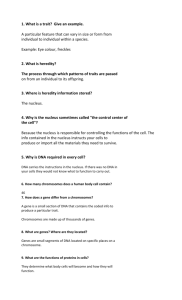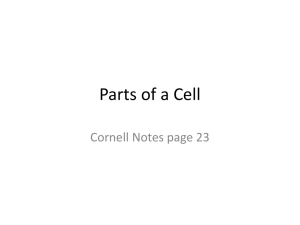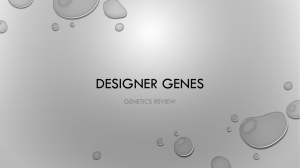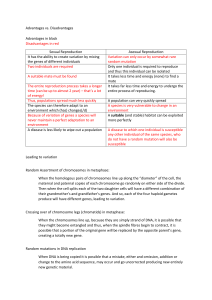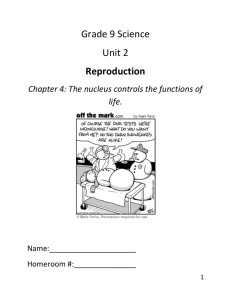Chapter Notes
advertisement
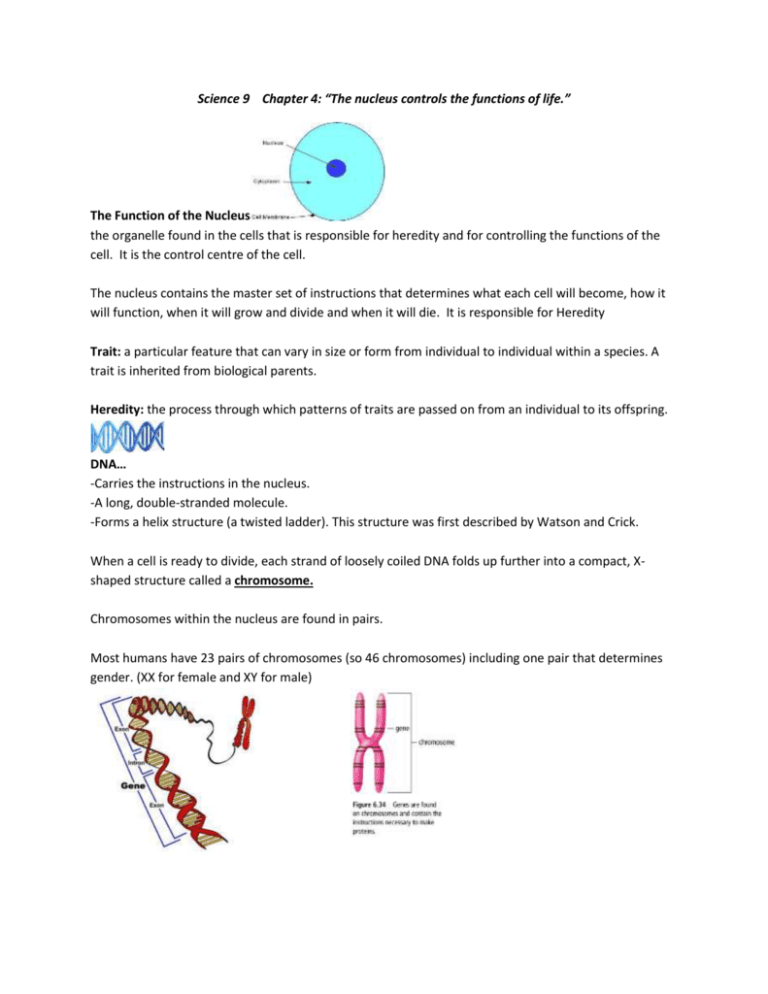
Science 9 Chapter 4: “The nucleus controls the functions of life.” The Function of the Nucleus the organelle found in the cells that is responsible for heredity and for controlling the functions of the cell. It is the control centre of the cell. The nucleus contains the master set of instructions that determines what each cell will become, how it will function, when it will grow and divide and when it will die. It is responsible for Heredity Trait: a particular feature that can vary in size or form from individual to individual within a species. A trait is inherited from biological parents. Heredity: the process through which patterns of traits are passed on from an individual to its offspring. DNA… -Carries the instructions in the nucleus. -A long, double-stranded molecule. -Forms a helix structure (a twisted ladder). This structure was first described by Watson and Crick. When a cell is ready to divide, each strand of loosely coiled DNA folds up further into a compact, Xshaped structure called a chromosome. Chromosomes within the nucleus are found in pairs. Most humans have 23 pairs of chromosomes (so 46 chromosomes) including one pair that determines gender. (XX for female and XY for male) Genes… - are found on chromosomes. - small segments of DNA located at specific places on a chromosome. - store information needed to produce proteins used by body cells. - Think of the chromosome as a train then the genes would be the cars that make up the train. Genes can vary in length from hundreds to thousands of bases. - The arrangement of bases will determine the protein produced in the cell. - Each chromosome contains thousands of genes. Proteins determine what body cells will become and how they will function. (Specialize cells will form tissues; tissues will form organs.) Mutations… A gene mutation is a change in the specific order of the bases that make up a particular gene. For example a base may be: - Added – Deleted - Substituted for another in a gene. Effects of Mutations 1. Positive Mutation - Benefits an individual such as resistance to disease 2. Negative Mutation - Harms the individual - Reduce the probability that the individual will produce offspring or survive in their environment. Such as Sickle cell anemia or Cystic Fibrosis 3. Neutral Mutation - Does not affect the individual such as Coat Color Mutagens… - are substances or factors that can cause mutations in DNA. Ex. Cigarette smoke, X-rays, pollutants Mutatgens may be caused by - Nature Ex. Solar radiation or Radioactive gases - Human Activity Ex. Chemicals or Nuclear Radiation Page 132 # 1-5, 7, 9, 11, 19, 20, 22


